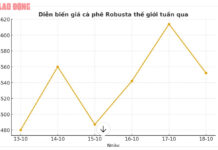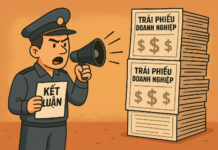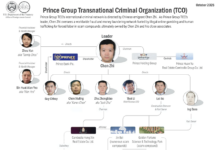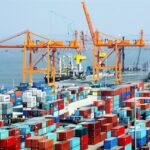
China is set to impose restrictions on tungsten metal exports by the end of this week, but the timing coincides with other suppliers reopening their operations.
This strategy is somewhat of a departure from the previous decades’ approach, where Chinese businesses flooded the global market with cheap tungsten, ultimately controlling 80% of the supply chain, according to Argus. Tungsten is an extremely hard metal used in weapons and semiconductors.
As part of the new export control rules, China’s Ministry of Commerce has released a list of critical minerals that will require export licenses. These restrictions will come into effect on December 1st.
This development comes amidst escalating tensions between the US and China. The US Department of Defense has banned its contractors from purchasing Chinese-mined tungsten starting January 1st, 2027.
“It’s a bit late for the Chinese on tungsten,” said Christopher Ecclestone, director and mining strategist at Hallgarten & Company.
“Everyone needs more tungsten, that’s for sure,” he stated. “The issue is that the Chinese ban will make tungsten mining more profitable for businesses from other countries.”
Ecclestone pointed out that the tungsten market didn’t change much following China’s announcement. To make mining this metal significantly profitable, he estimated that trading prices would need to be about $50 higher than the current level of around $335/mtu.
While China restricts tungsten exports, the US has imposed a 25% tariff on Chinese tungsten since September. Most public comments supported this tariff, arguing that it benefits domestic production. Some even called for an increase to 50%.
Cullen S. Hendrix, a senior fellow at the Peterson Institute for International Economics, noted that it could take years to open a mine, but higher tariffs on imported tungsten could make some US mining projects “more commercially viable.”
According to official records, the US has not mined tungsten commercially since 2015. But this year, one of the world’s largest mines is moving closer to resuming production in South Korea.
Almonty Industries, a Canadian-based company, is getting closer to fully reopening the Sangdong mine and processing plant. This mine was closed in 1994.
Almonty aims to restore Sangdong’s potential output to about 50% by the summer of 2025, CEO Lewis Black told CNBC last month. He noted that 90% of South Korea’s tungsten comes from China.
Almonty also operates a tungsten mine in Portugal. In 2015, the company completed an acquisition that allowed them to mine at Sangdong. Gracelin Baskaran, director of the Critical Mineral Security Program at the Center for Strategic and International Studies, stated that Almonty has committed to transferring 45% of South Korea’s Sangdong mine to the US through long-term supply contracts.
Demand for tungsten within and outside China is expected to increase, potentially driving up tungsten prices in the coming years, according to Emre Uzun, an iron and steel alloys analyst at Fastmarkets. However, starting in late next year, he anticipates that non-Chinese supply will rise to stabilize crude tungsten prices.
“Demand outside of China will also increase, but supply is expected to rise as well with expansions and projects progressing,” he said, pointing to the Sangdong mine and tungsten projects in Kazakhstan, Australia, and Spain.
Source: CNBC
The Battle for the $2 Billion Coffee Market: Luckin Coffee, Cotti, and Starbucks’ Woes.
Starbucks is considering its options in China, including the potential sale of its business or a joint venture with a local partner.
“BIG Set to Smash Year-End Revenue Targets, Thanks to Durian; 5.2% Dividend Payout Imminent”
The Hanoi Stock Exchange (HNX) has announced the record date for the cash dividend of Big Invest Group Joint Stock Company (BIG) listed on UPCoM. As of December 4, 2024, shareholders are entitled to a generous 5.2% dividend yield. The company’s leadership has also revealed impressive revenue growth projections for 2024, largely driven by the China-focused durian import-export business, especially during the pre-Lunar New Year peak season.










































